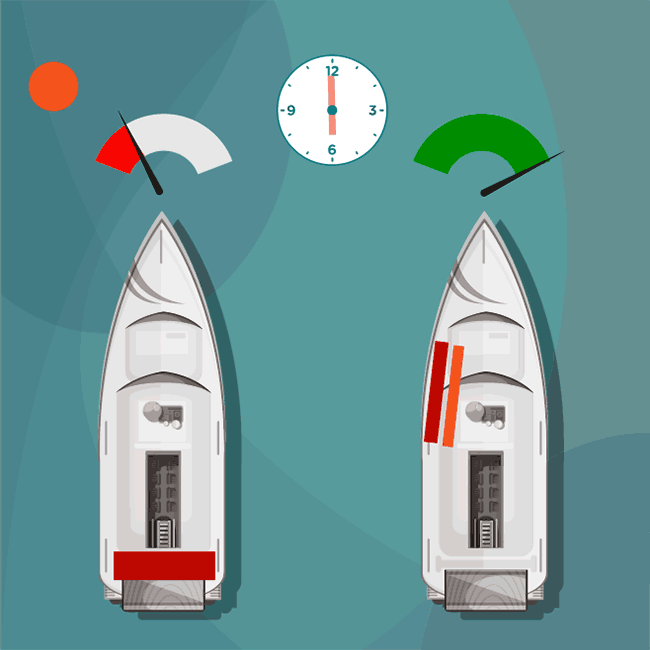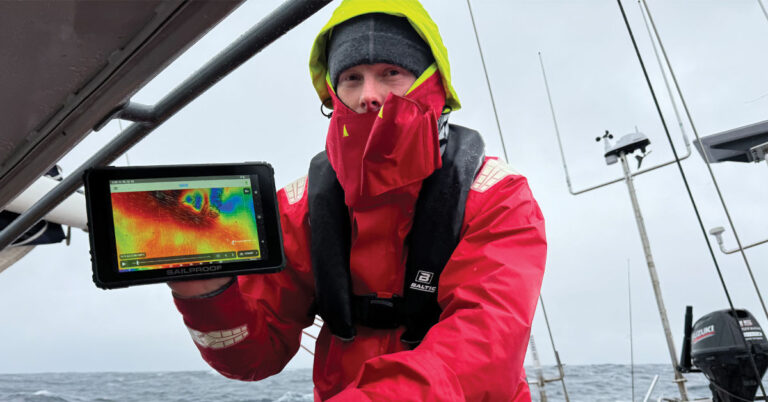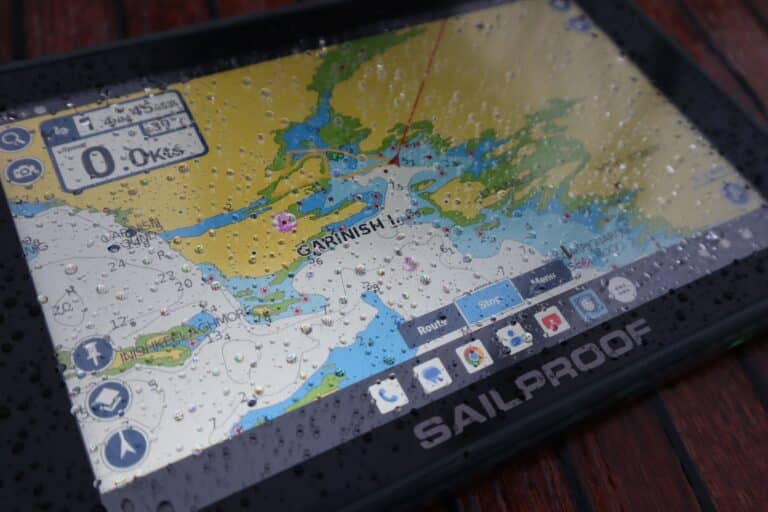Power generation is a major problem on a ship. Different solutions exist, each with their advantages and disadvantages. There is thus a solution that meets the demand, in particular, of smaller boats, on which it is sometimes difficult to install fixed panels, whose engine does not always allow the batteries to be recharged – for example if it is an outboard without an alternator – or simply to avoid having to run it at regular intervals. It is the choice of foldable and mobile solar panels.
Foldable and mobile solar panels, the solution to optimize solar orientation
These panels, when folded, take up very little space and can therefore fit anywhere in the boat; a sometimes crucial argument, especially for small boats. Once unfolded, you can place them on the deckhouse, the side decks, the front decking or even hoist them vertically… With the advantage of being able to move them throughout the day and thus follow the sun or compensate for the boat’s swinging at anchor when the wind or current changes. What is, indeed, the proportion of time during the day when a fixed panel actually receives 100% sunlight? When we know, moreover, how much productivity can be lost when it is partially hidden, the possibility to move its panel, or even to place 2 of them in different places, is an undeniable asset.

Personally, I am equipped with two 75-watt solar panels. It would obviously have been impossible for me to place 150 watts of fixed panels on a boat less than 8 meters long! Today, all I usually have to do is unfold them when I arrive at anchor at the end of the day and in an hour or two I’ve recharged my batteries. Likewise, in the morning, I put them in place while having my coffee and an hour later, I have often compensated for the night’s consumption (usually represented by the refrigerator, the night light and one or the other charging battery: VHF, smartphone, tablet, etc.). If necessary, I also use them when sailing: secured by bungee cords, they can easily hold up to 15 or 20 knots of wind. And as they are resistant to water splashes, I am not afraid of the sea spray: a little sponge blow when folding them back, to avoid salt traces during drying, and that’s it.
Longevity and endurance of foldable solar panels
However, there are many other advantages to using this type of foldable and mobile solar panels. One of the reasons for this is that instead of being exposed to the weather 365 days a year, summer and winter, they are only out when they are needed. They are therefore much less subject to ageing (opacification, loss of power, etc.) and to the other hazards of permanent exposure (sea spray, dirt, bird droppings, etc.).
The foldable solar panel, a nomadic product
This is undoubtedly one of our main concerns at SailProof: to promote nomadic products. This type of panel is obviously very easy to move. If you change boats, you will always have the possibility to retrieve it and place it on the new one. Or to resell it: as it has not suffered much from the hazards of ageing, it will have retained its value and will certainly find a new owner who will be happy to install it in record time on his boat: connected to a charge controller, wired up, plugged in and off you go for a new life!
Which foldable solar panel to choose?
First of all, it’s important to establish your consumption balance. You will find on the specialized forums all the information to do so, and even examples or Excel files to help you in the calculation. Next, assess the space available on your boat and check the size of the solar panel you are considering when it is unfolded. As far as possible, choose solar cells, which offer an efficiency close to 24% whereas standard cells are around 17 to 18%. It may not seem like much, but it still means a 30 to 35% higher yield. ! If you combine this with a good MPPT¹ controller instead of the traditional PWM² you will gain another 30% efficiency.
Finally, make sure you have a proper outlet and wiring. Some portable solar panels are only equipped with alligator clips or a 5-volt USB socket and a 12-volt output with simple DC connectors. It is therefore impossible to recharge your battery (which requires a minimum of 14 volts). At SailProof, the foldable solar panels are equipped with 4mm² with waterproof MC4 connectors. They allow you to fully exploit the voltage of the solar panel (19-20 volts).
Personally, I have been using folding solar panels for 3 years and I am 100% satisfied with them. I sail in regions that are not known for their exceptional sunshine and I prefer anchorages. However I don’t never once ran out of energy. How about you? Feel free to comment this article and ask your questions… Looking forward to reading you, I wish you a great year of sailing!
Jean-Michel
¹ MPPT: “Maximum Power Point Tracker”
² PWM: “Pulse Width Modulation”






